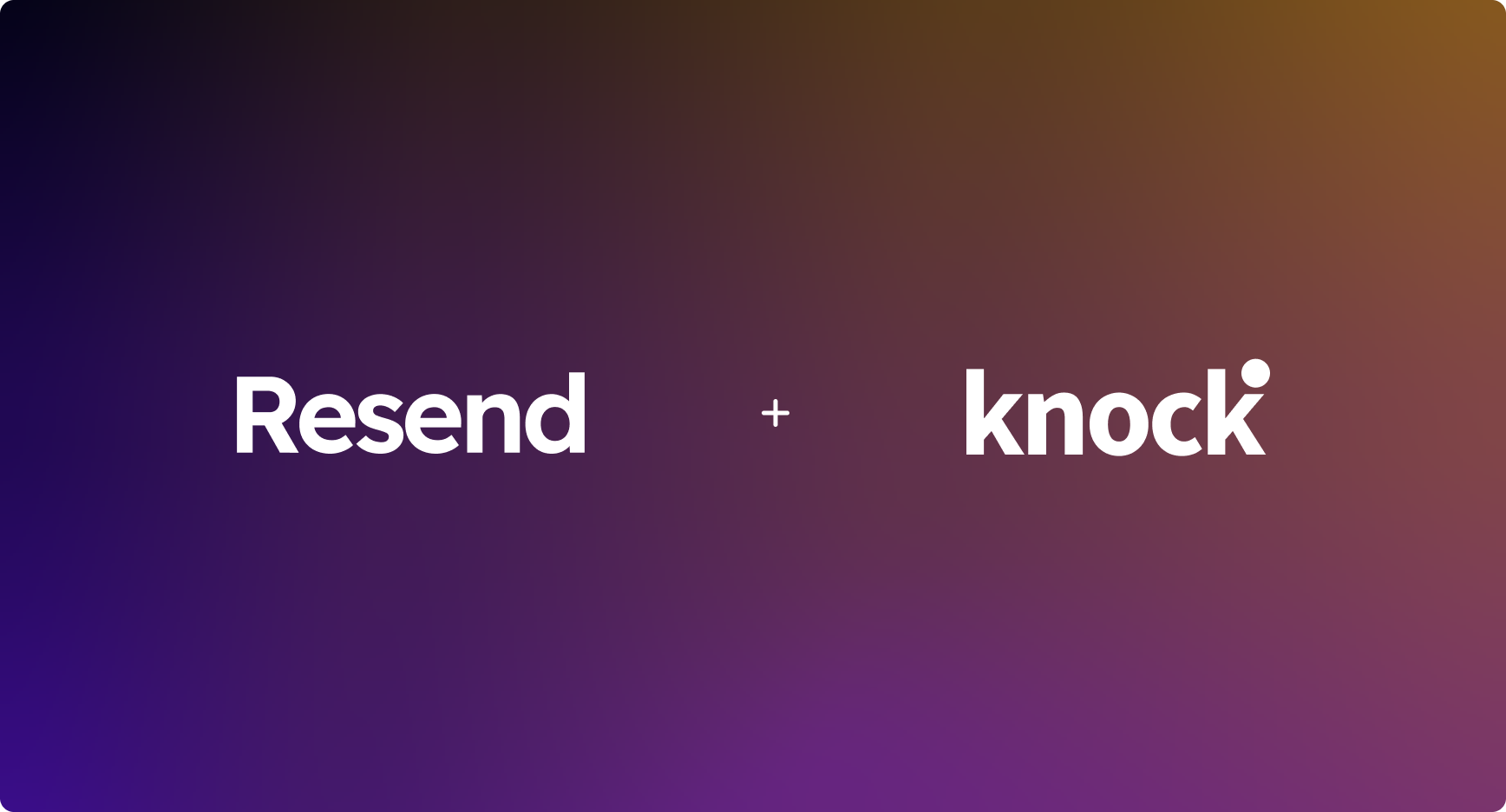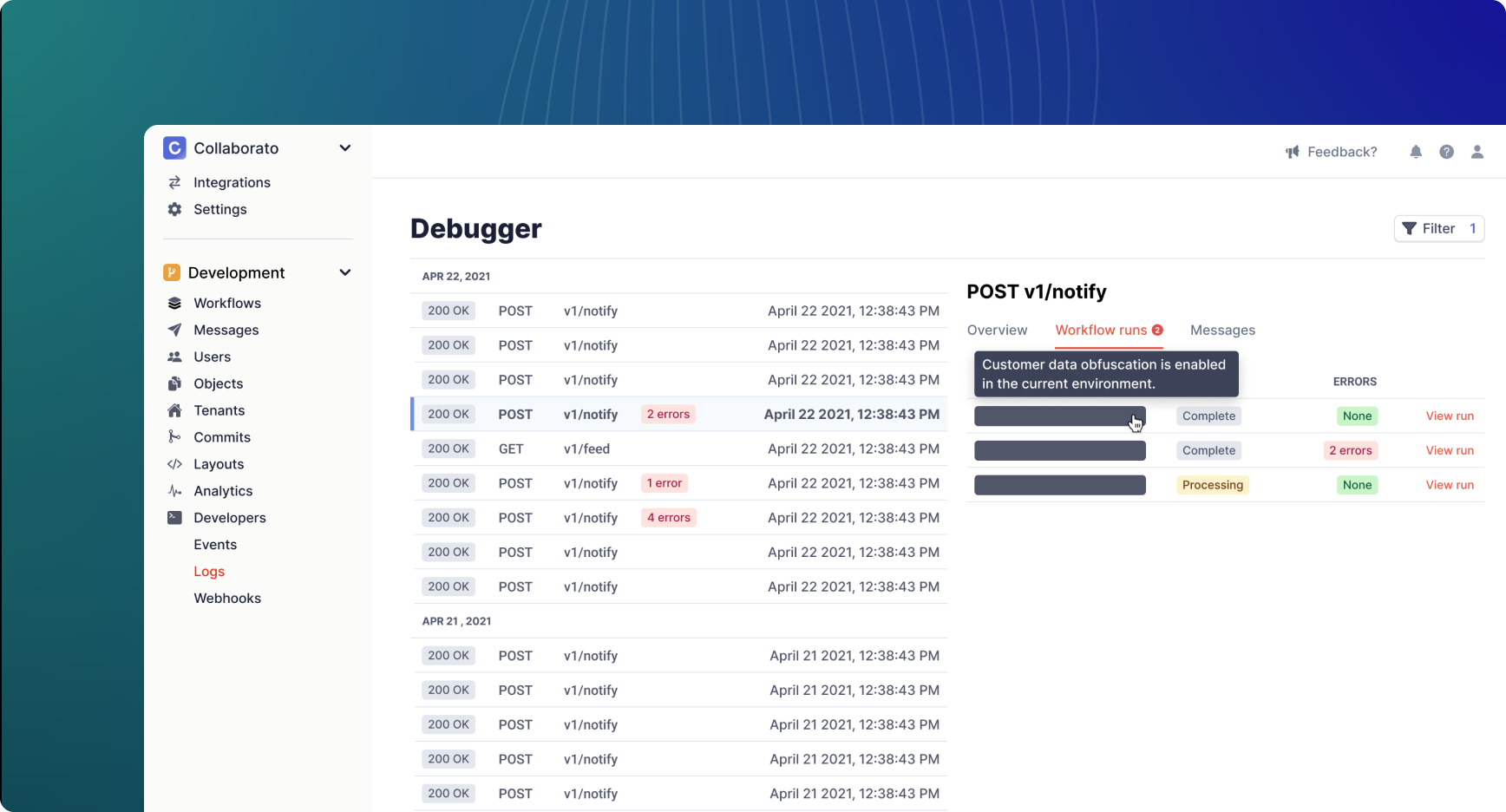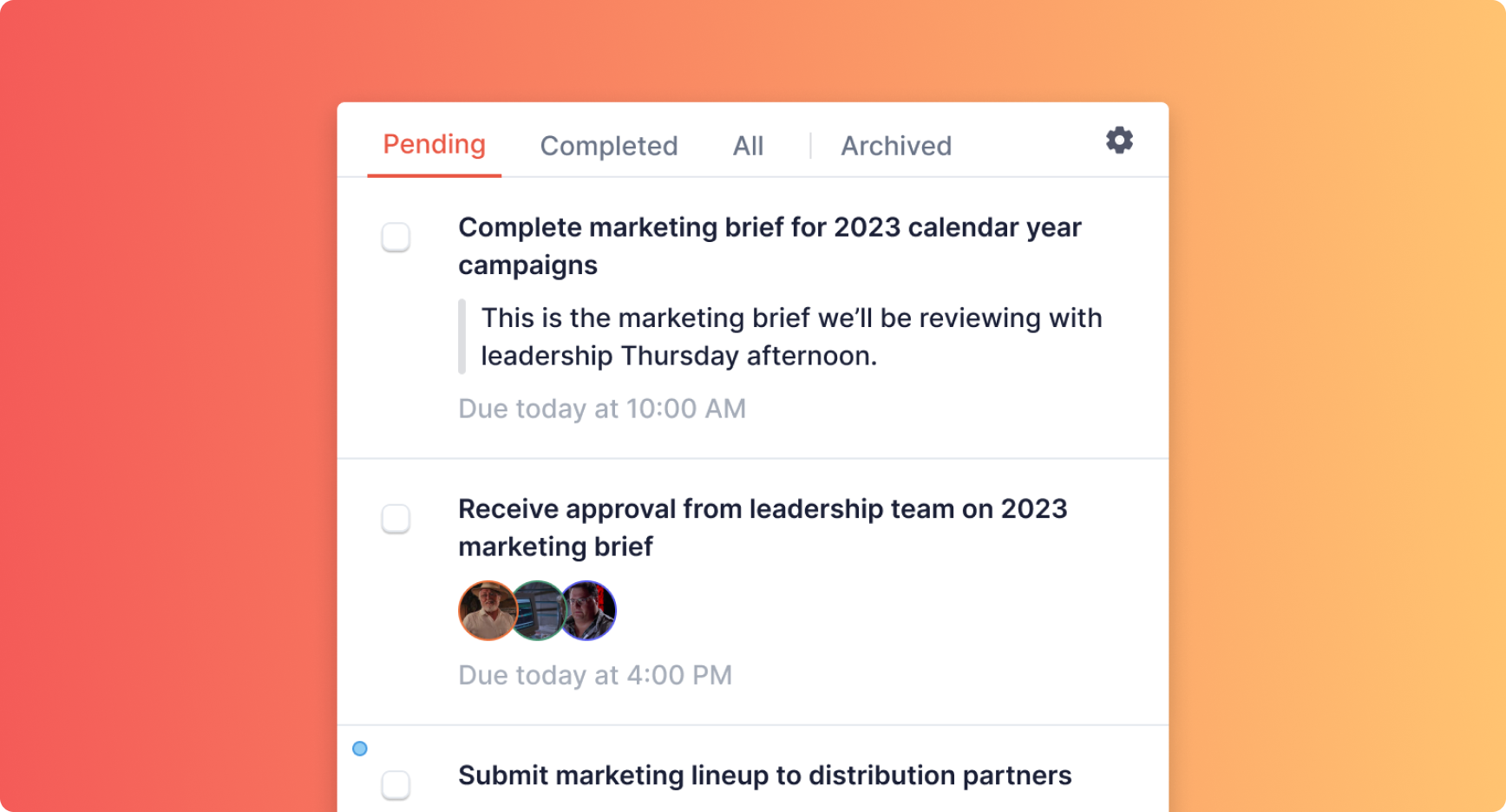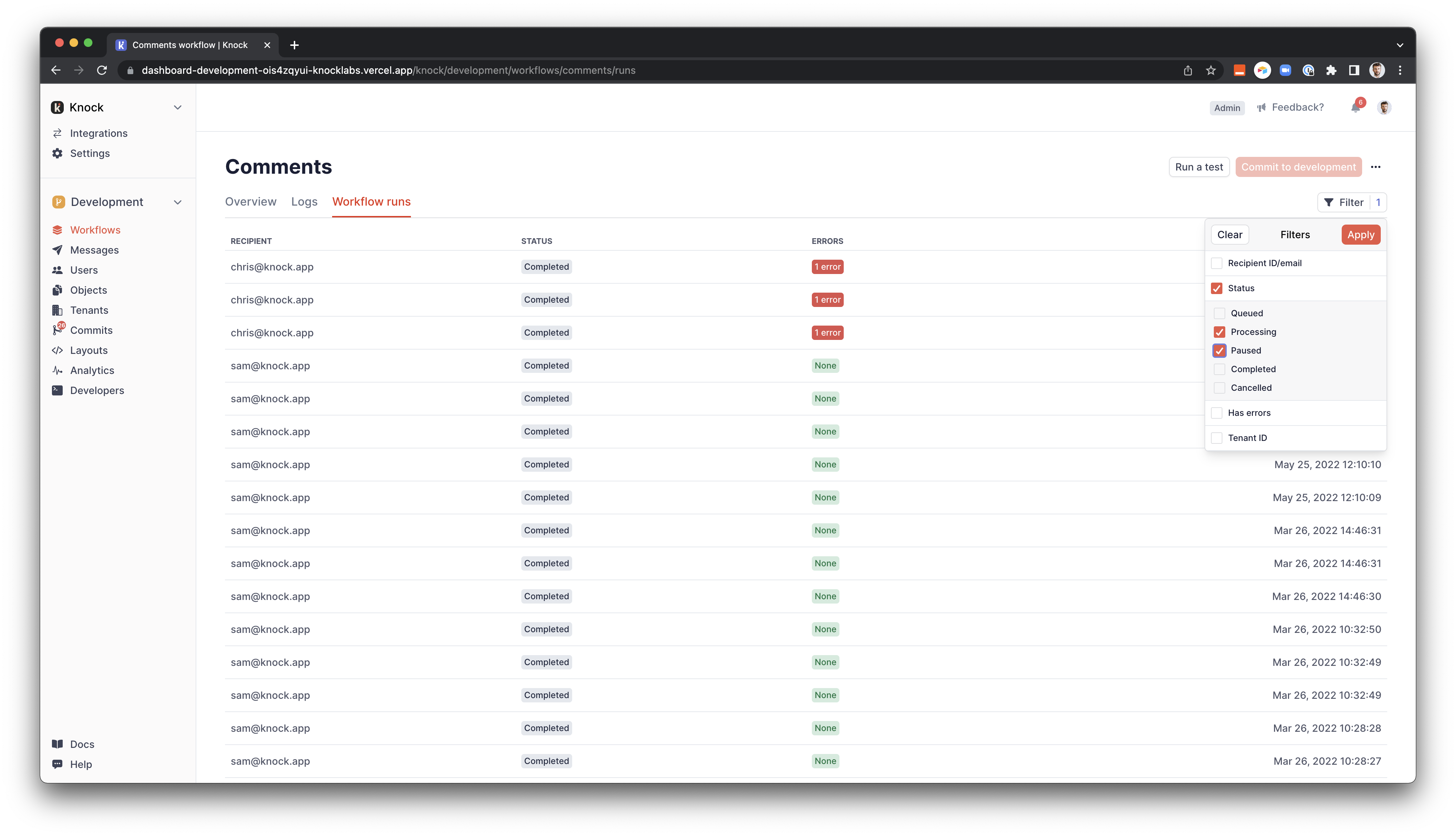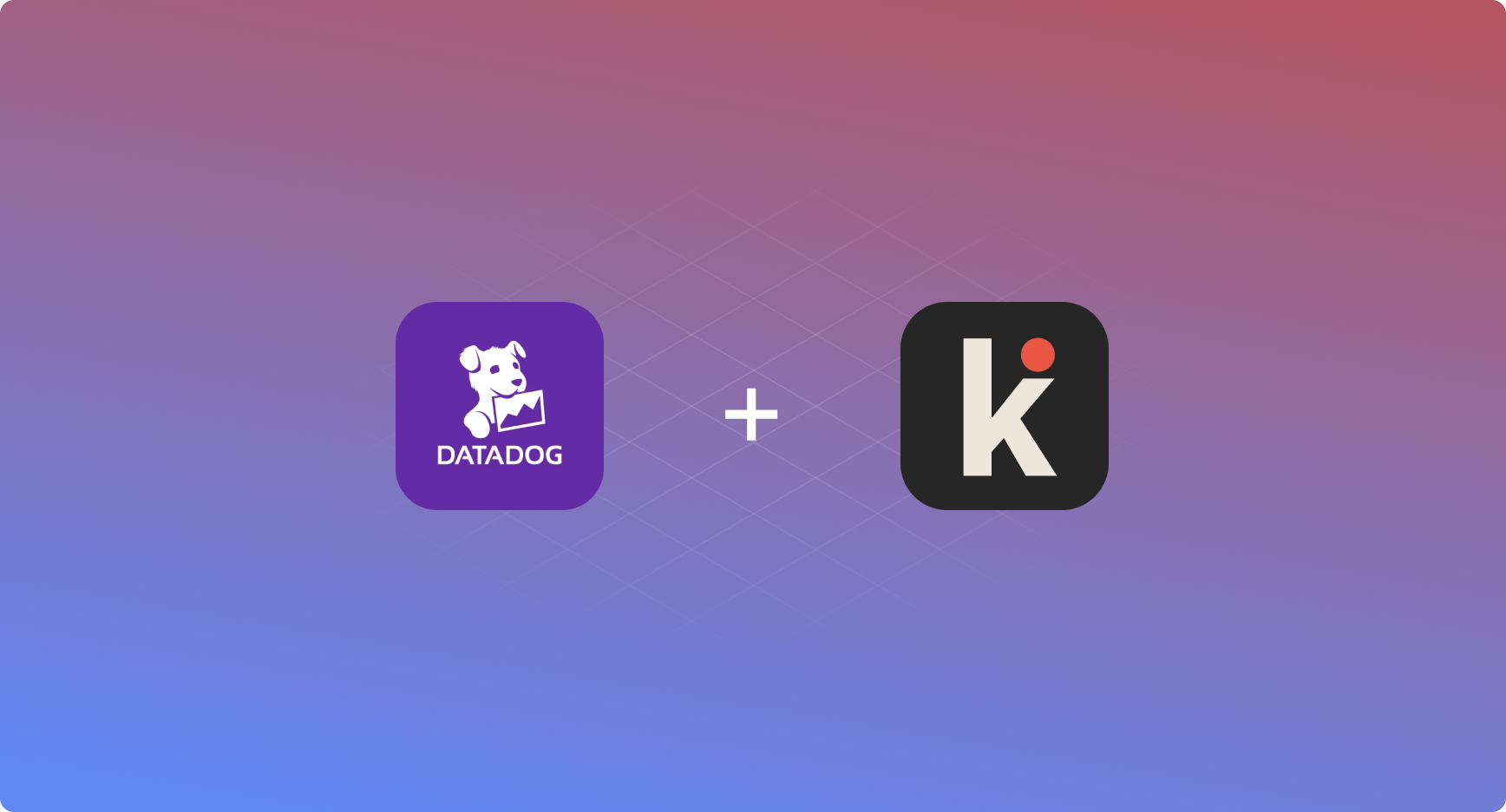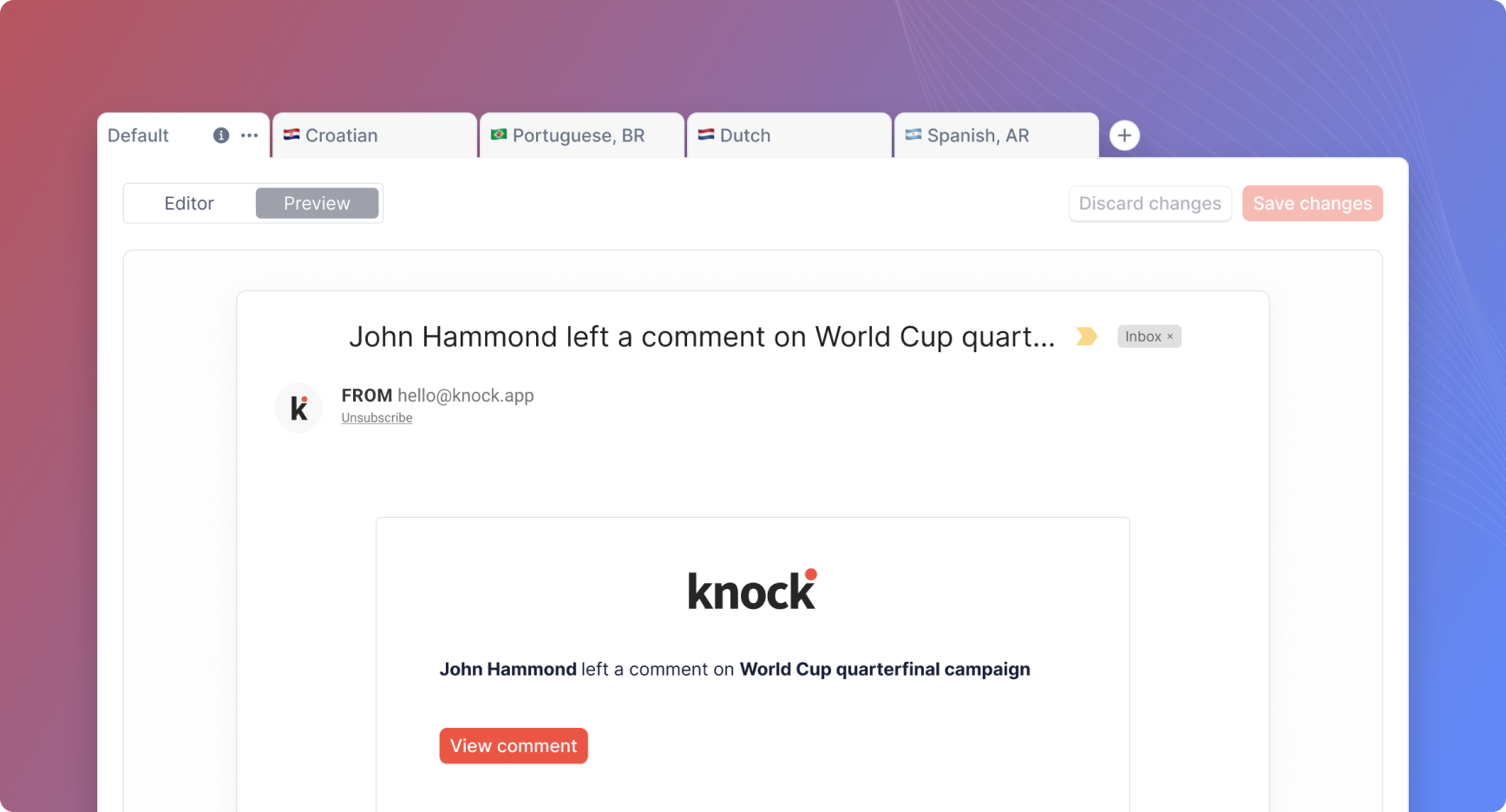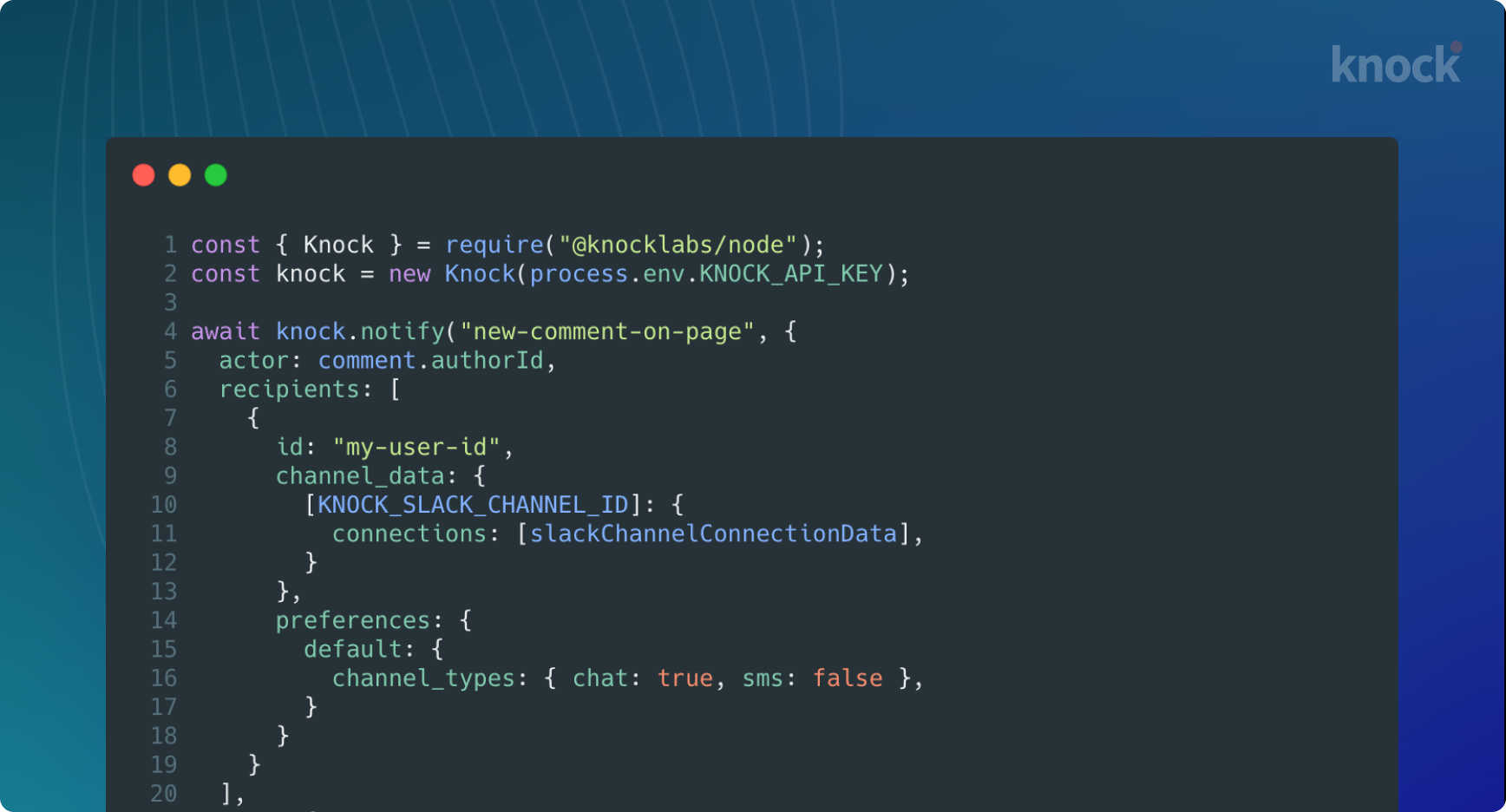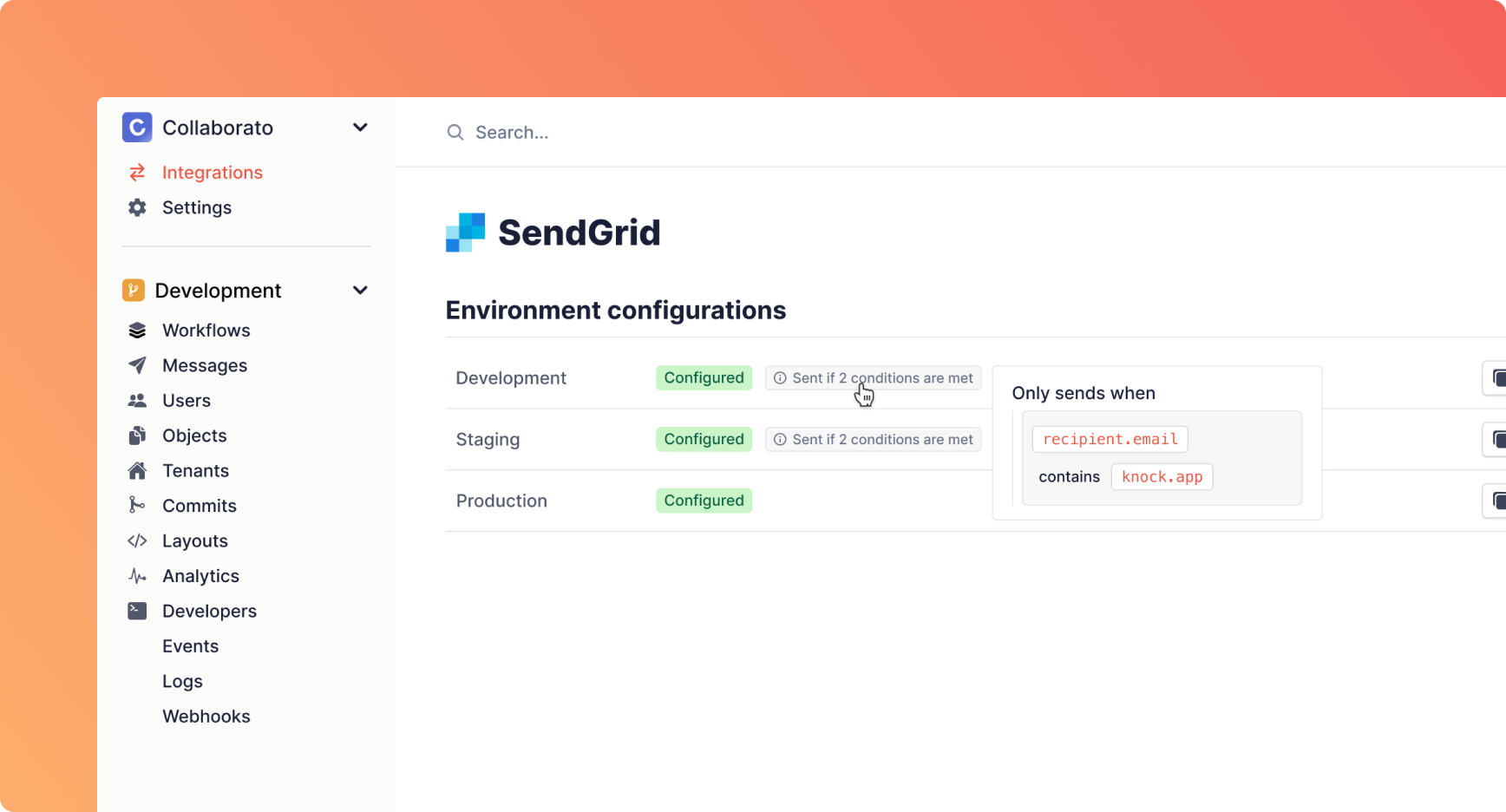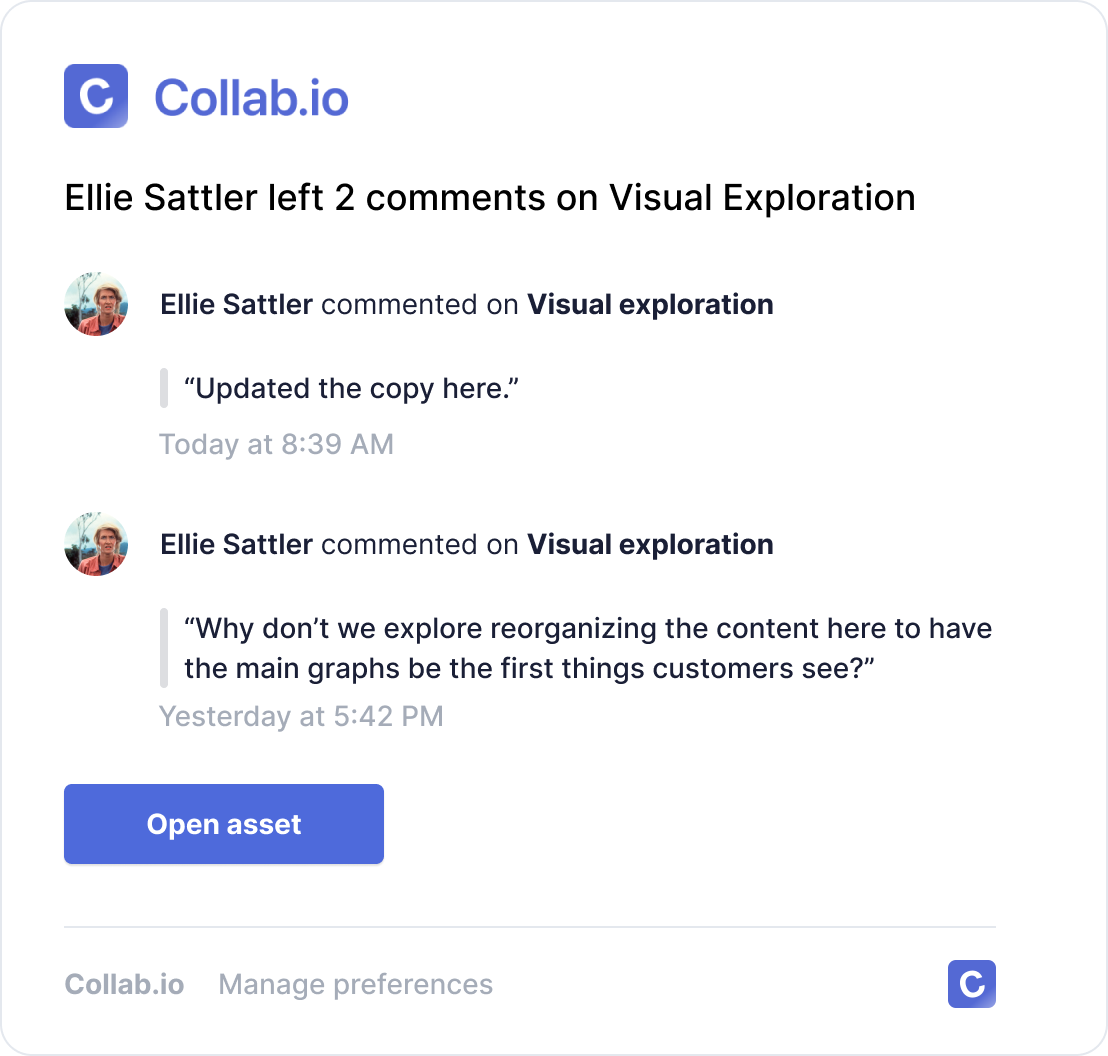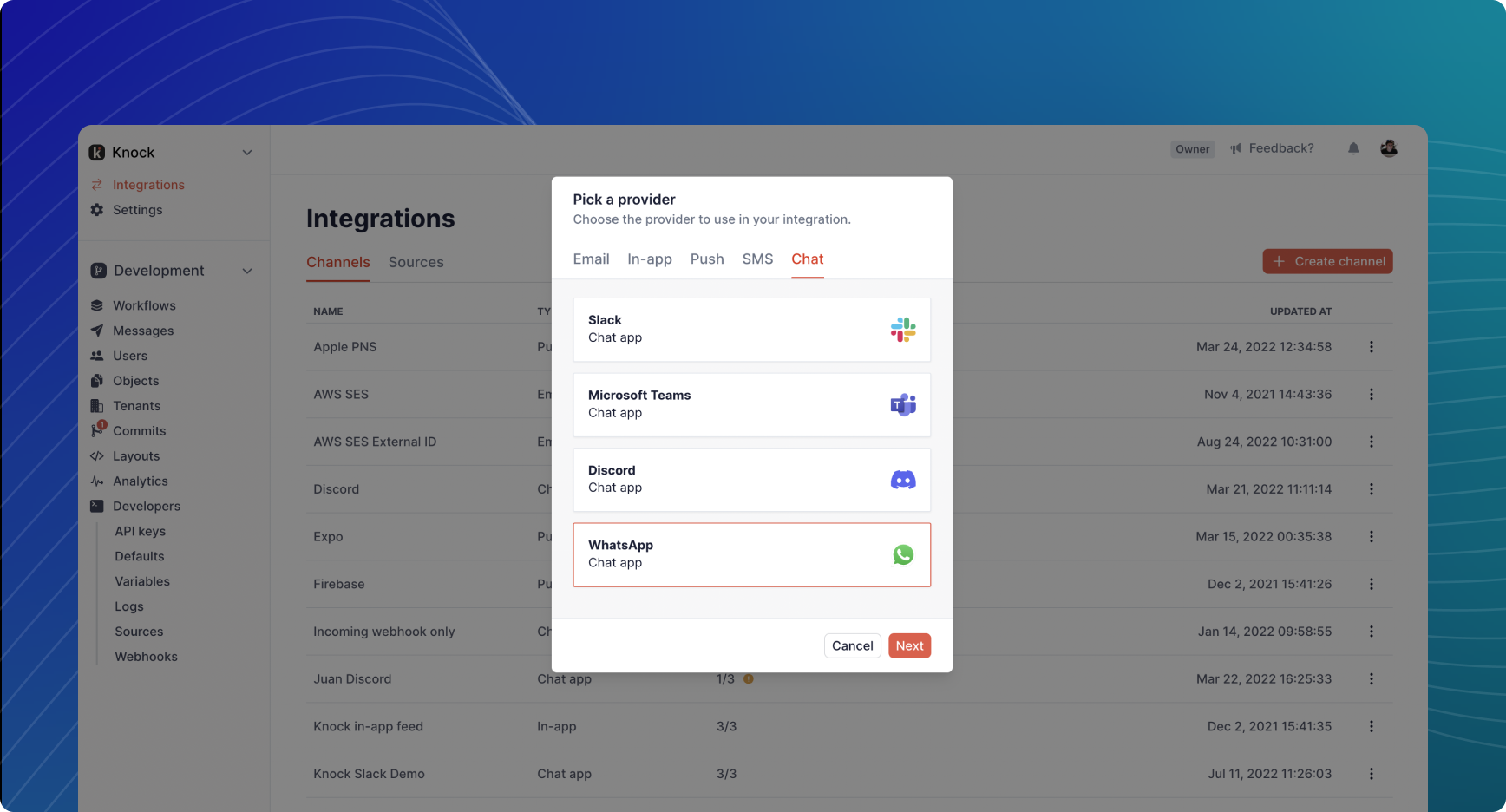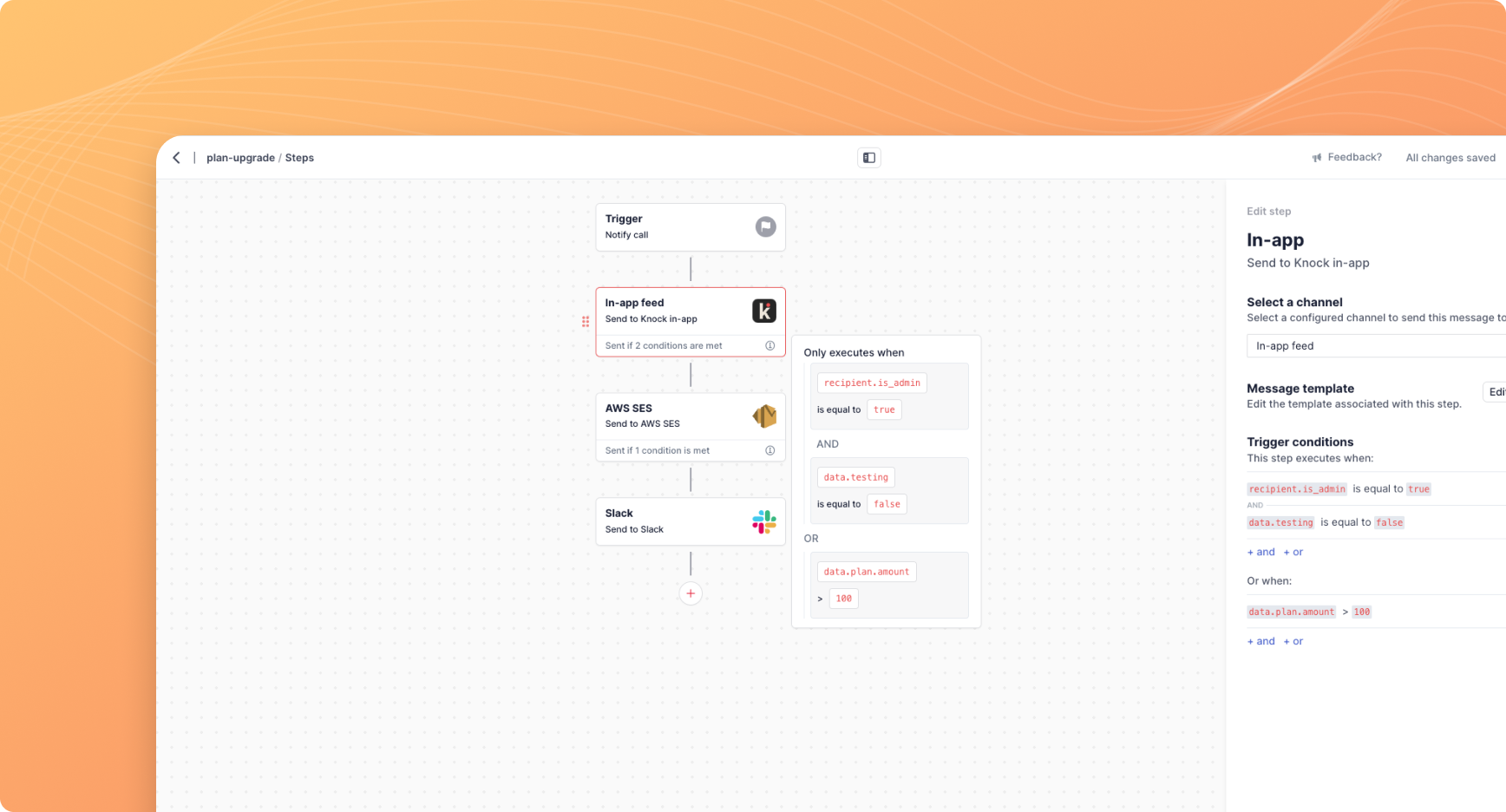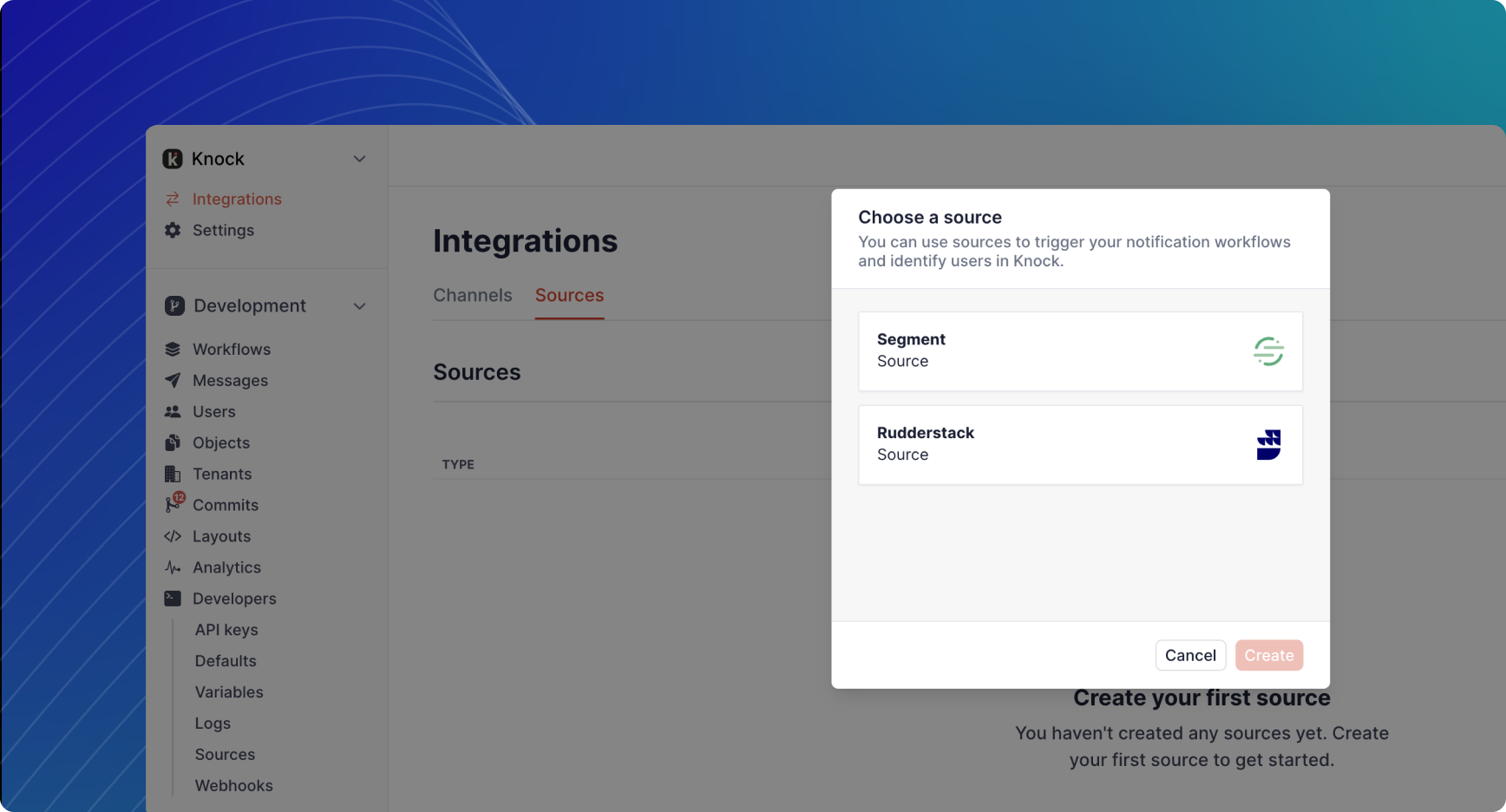Resend + Knock
We're super excited to announce that we now support Resend as an email provider with Knock. Now you can send great-looking emails through Resend's email API, while orchestrating your multi-channel notifications with Knock.
We're a big fan of the Resend team and of modern developer tooling in general, so we're excited to be able to extend their API to Knock customers everywhere. Happy (re)sending!
An improved user search component: find by ID or email
This improvement is a long time coming. We've improved our user search component in a big way. Now when you're in the Knock test runner, you can search for recipients and actors by either their user ID or their email. This makes it much easier to quickly find the recipient you're looking for and send them a test notification.
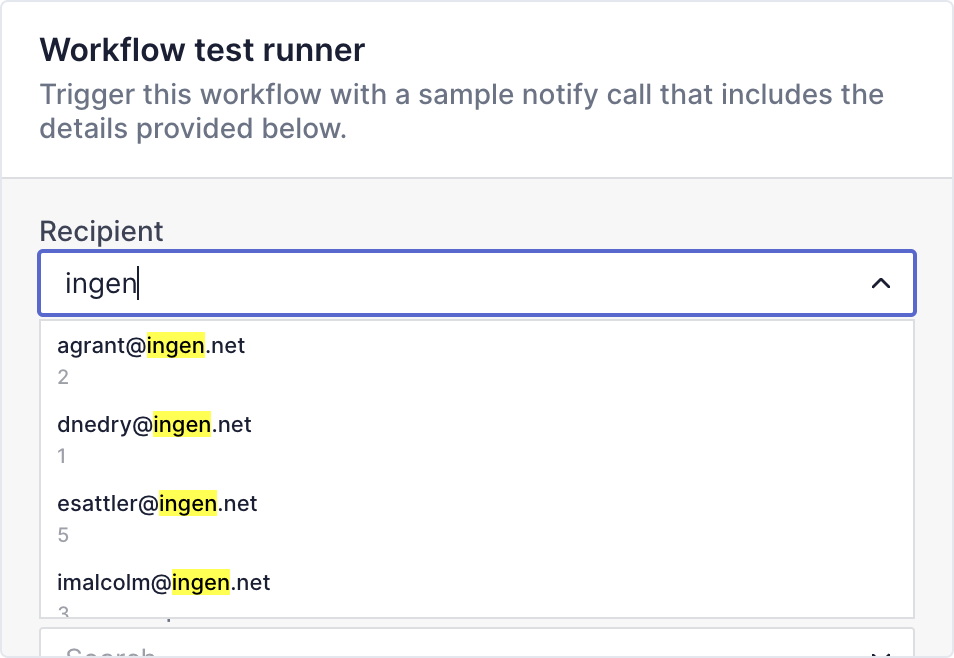
We've updated all of our other user search experiences (across messages, logs, and workflow runs) to use this new behavior, too. This makes it easier for your support team to quickly find the Knock logs associated with a particular user.
New and improved template editor design
We've added some visual polish to our template editor. It helps with general spacing and readability. We've also added new breadcrumbs to the template editor to make it easier to see where you are in Knock and to quickly return to your workflow canvas.
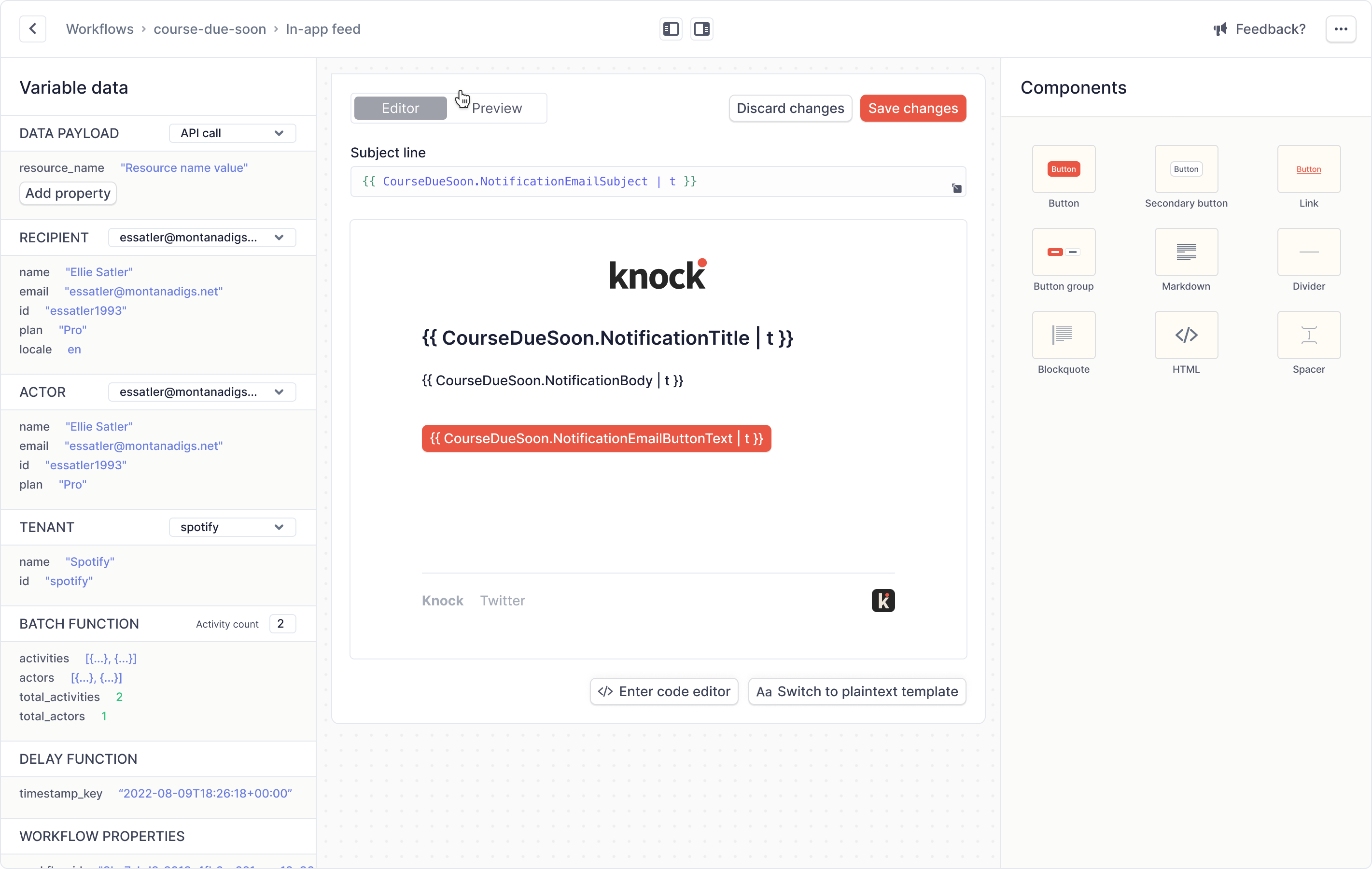
New undelivered status with outbound webhook support
Our outbound webhooks are a popular way for our customers to stay updated on what's happening in their Knock system and to trigger behavior in their own application based on Knock events.
Previously our message.undelivered webhook would fire with each delivery attempt we made to your downstream notification providers. Now we have two separate webhooks, one for our delivery attempts to your providers (message.delivery_attempted) and one for when delivery has failed and no more attempts will be made (message.undelivered).
This makes it easier to trigger behavior in your application based on undelivered notifications.
Fixes and improvements
- 👀 We've added a
workflowtag to our datadog metrics - 👀 We've made some performance improvements to our analytics views in the Knock dashboard
- 👀 We improved our error messaging when sending a
null,undefined, or empty API key into Knock - 🐛 We fixed an issue where email fields with liquid would fail on downstream providers when resolving to an empty string
- 🐛 We fixed an issue where conditions with arguments that resolved to strings containing periods could cause errors when evaluating some conditions
